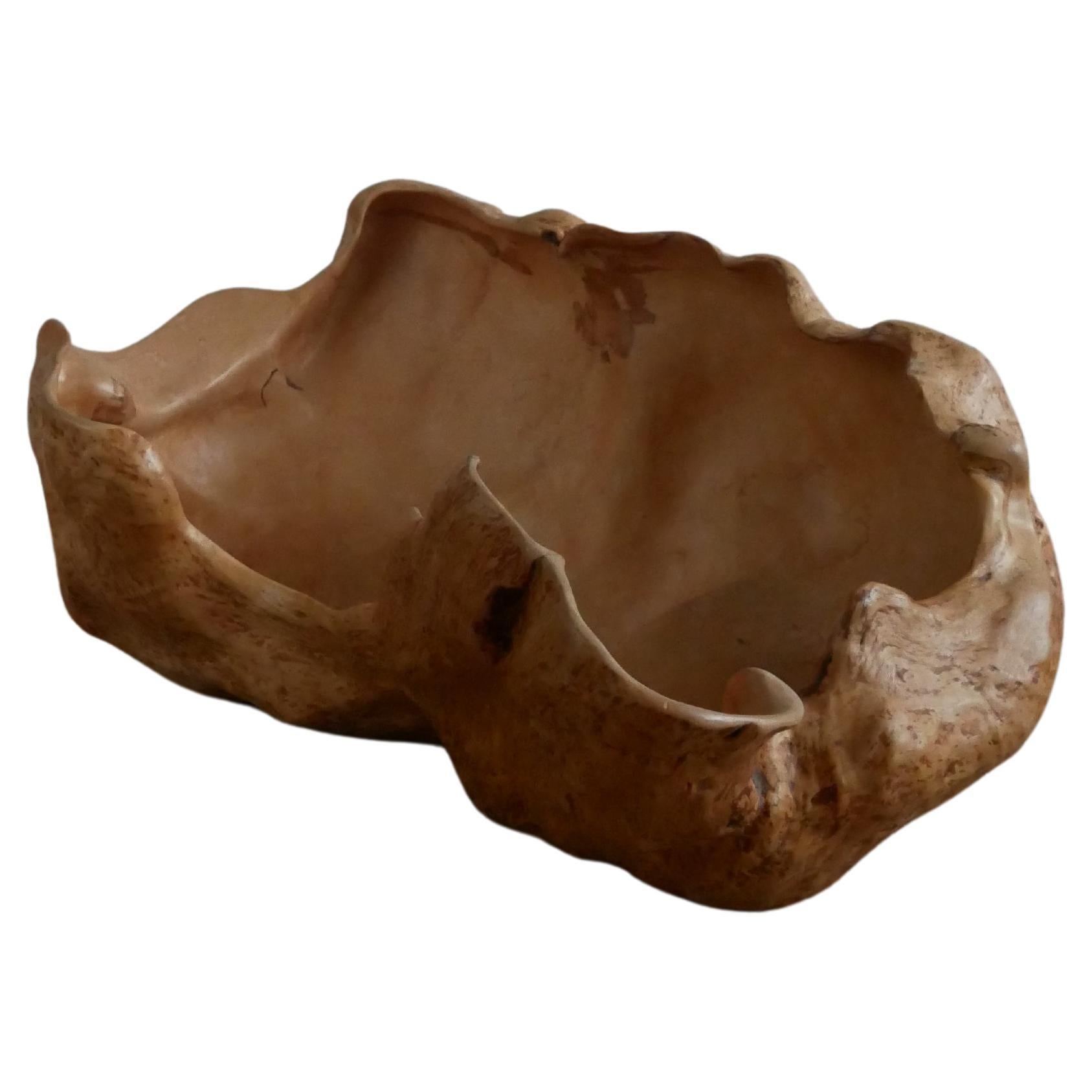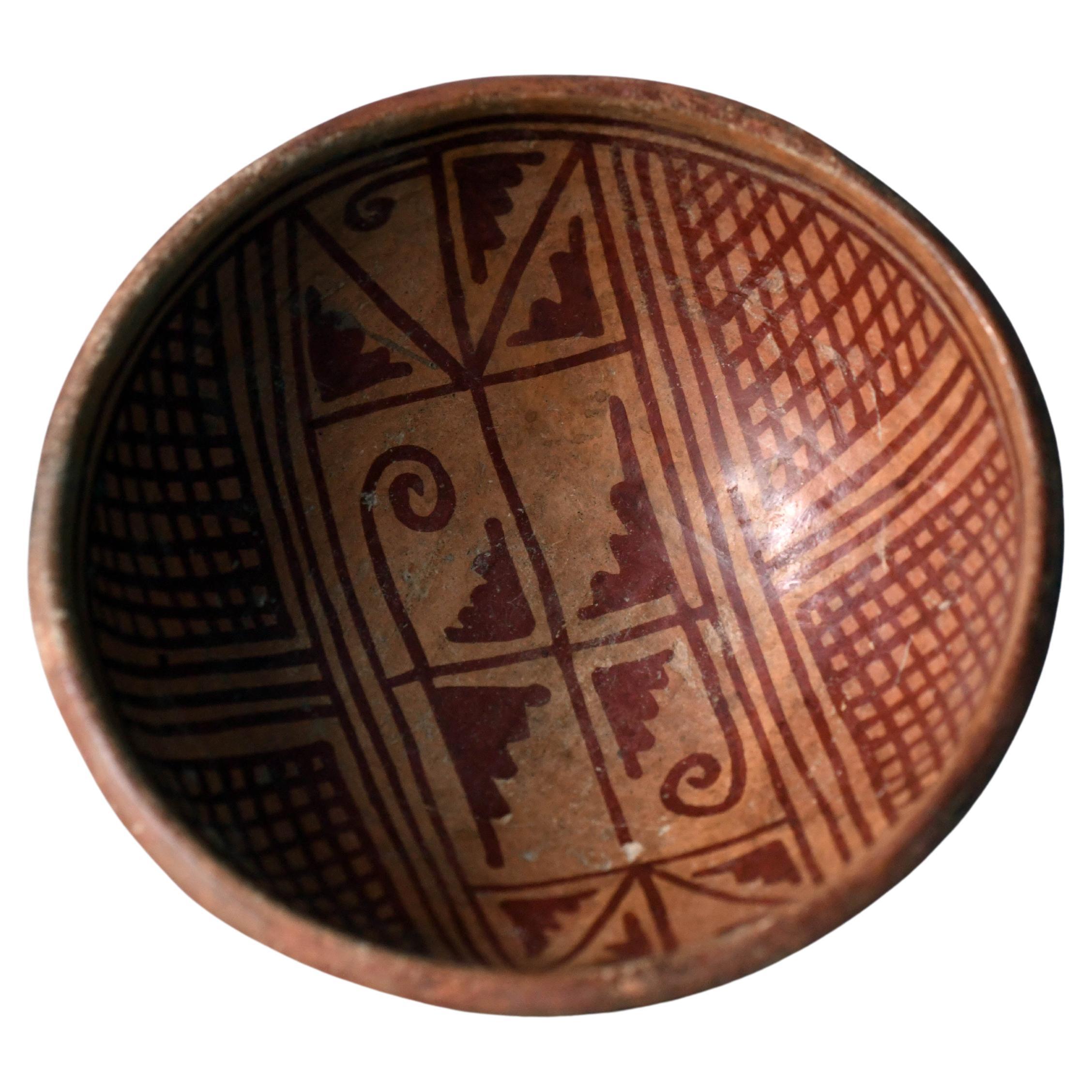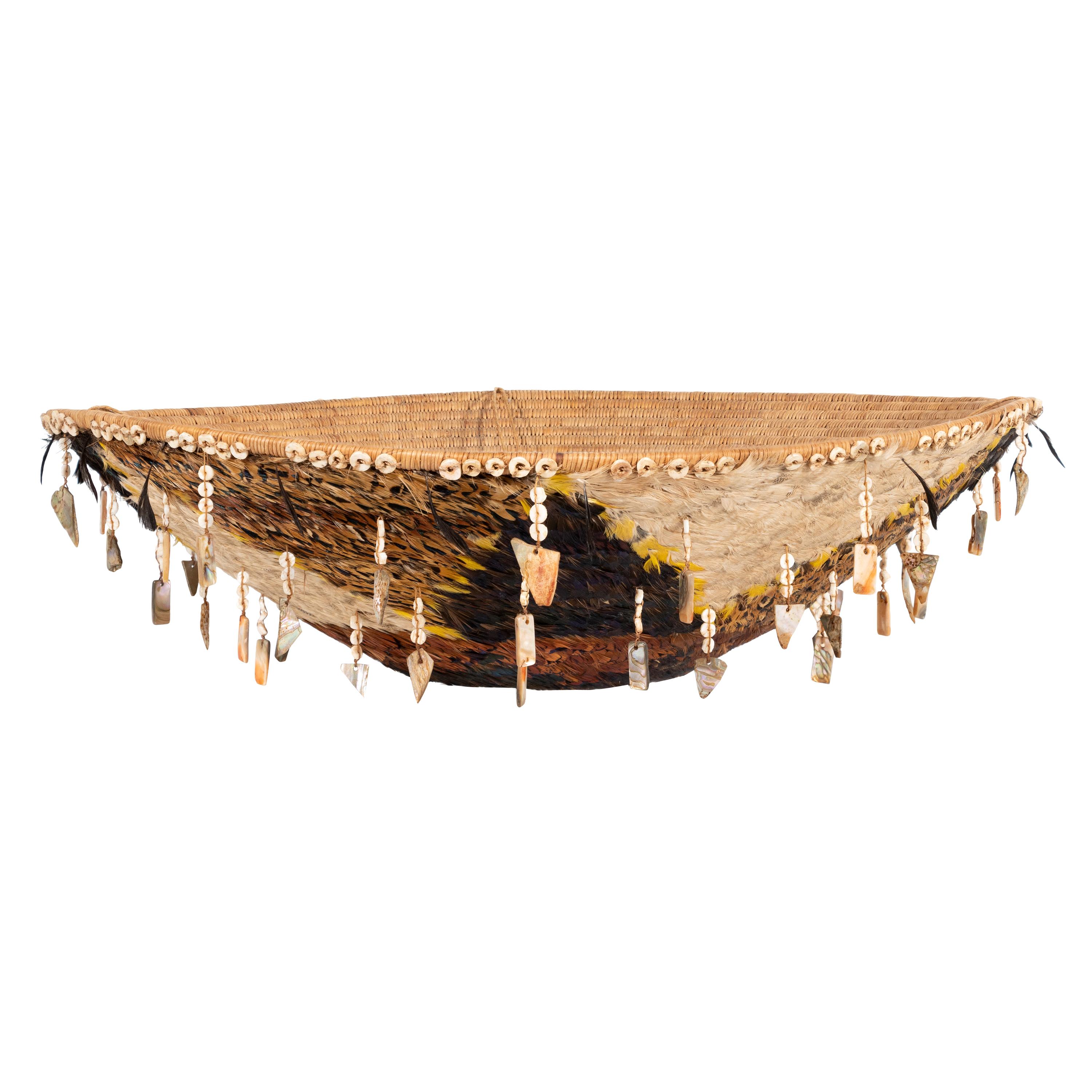Want more images or videos?
Request additional images or videos from the seller
1 of 8
Anglo-Saxon Hanging Bowl
About the Item
A very rare and near-complete copper-alloy hanging bowl and associated fittings. Crafted from a single sheet of bronze, the body of the bowl is curved, with a slightly recessed lip. The bowl features three matching hooked escutcheons and suspension rings, evenly dispersed around the circumference and adorned with patterns of incised lines and raised zigzags, and with a curlicued vegetal motif in the centre of the raised escutcheon. The basal disc features a delicate circular design of raised curls around a central point.
Hanging bowls are a distinct class of object associated with the period between the end of Roman rule in Britain around 410 A.D. and the emergence of the Christian Anglo-Saxon kingdoms during the seventh century. Most have been found in Anglo-Saxon graves, dating them between the sixth and late seventh century. However, the style of decoration seen across the bowls can be viewed as Celtic in origin, suggesting they may have been manufactured well before they were interred. Most are known from East Anglia, with some examples known from Pictish and Irish contexts. If the bowls did originate from Celtic hubs in Wales or Scotland, then they would have travelled far over the course of their lifetime.
The use of these bowls remains a mystery to scholars, with one theory that they were used during religious ceremonies or to hold holy water. Some bowls have been found with deliberate knife marks prior to their burial, perhaps intended to remove their power. Another theory is that they served as gifts or tribute to accompany peace, marriage, or trade deals, or that they may have been used for the Roman custom of mixing wine and water at the dining table. It is also unclear whether the bowls were suspended from threads extending from a central fulcrum, or whether they hung from hooks on a tripod. A tripod would allow easier access to liquids in the bowl for ritual or liturgical purposes. One possible parallel can be found in images of the Oracular Cortina, or Delphic Tripod, a three-hooked bowl suspended from a tripod used by the oracle of Delphi and high priestess of Apollo in Ancient Greece.
Provenance:
Discovered 5th February 2023 by Chris Ulliott, in Ryedale, North Yorkshire, UK.
Portable Antiquities Scheme No. YORYM-59523A.
ALR: S00236559, with IADAA Certificate, this item has been checked against the Interpol database.
- Dimensions:Height: 1.42 in (3.6 cm)Diameter: 7.88 in (20 cm)
- Materials and Techniques:
- Place of Origin:
- Period:
- Date of Manufacture:550-700 A.D
- Condition:Wear consistent with age and use.
- Seller Location:London, GB
- Reference Number:
About the Seller
5.0
Vetted Seller
These experienced sellers undergo a comprehensive evaluation by our team of in-house experts.
Established in 1910
1stDibs seller since 2020
- ShippingRetrieving quote...Ships From: London, United Kingdom
- Return PolicyThis item cannot be returned.
More From This SellerView All
- Two Glass Inlay PairsLocated in London, GBTwo pairs of two halves from the same bar, finely detailed, with pointed ears and eyebrows, opaque yellow face, opaque red on the mouth, nose, eyes and ears, translucent cobalt blue edges to the mouth, nose and ears, with translucent emerald green leaves above and between the translucent cobalt blue brows and eye line, translucent pink pupils, with translucent cobalt blie and opaque white snake scales below the face, in translucent cobalt blue matrix, cut in the lower part of a cartouche design. These rare heads might represent the Agathos Daimon, the tutelary deity of Alexandria, who was also identified with Serapis, the male counterpart of Isis-Thermouthis (who in turn was a graecisized form of the early snake harvest goddess Renenutet). In a statue of Isis-Thermouthis in Alexandria museum (no. 25773, ex-collection King Farouk I), reproduced in Gotten, Pharaonen, no. 151, the snake goddess...Category
Antique 15th Century and Earlier Egyptian Antiquities
MaterialsGlass
- Statuette of the Goddess NeithLocated in London, GBBronze statue of the goddess Neith, striding, her left foot extended forward. Her left hand is extended forward and formally held a papyrus sceptre, a fragmentary ankh is visible in ...Category
Antique 15th Century and Earlier Egyptian Egyptian Antiquities
MaterialsBronze
- Bronze SirenLocated in London, GBSirens were dangerous bird-like females who tempted sailors with their hauntingly beautiful song. In Homer’s Odyssey (XII, 39) Odysseus and his sailors were warned about the lethal c...Category
Antique 15th Century and Earlier Greek Classical Greek Antiquities
MaterialsBronze
- Bronze HoardLocated in London, GBDagger L: 27.8 cm, Luniform bronze, possibly a belt buckle L: 10.8 cm, Shield-shaped bronze with a point Diam: 6.5 cm, Pommel Diam: 3.7 cm, Violin-bow brooch L: 17.5 cm, P-Shape...Category
Antique 15th Century and Earlier European Classical Roman Antiquities
MaterialsBronze
- Megalithic StelaLocated in London, GBA tall anthropomorphic stele of carved granite, divided into two distinct regions of the body and face. The body is a single unarticulated block, but the facial features are outlined...Category
Antique 15th Century and Earlier European Antiquities
MaterialsGranite
- Ushabti for ImenmesLocated in London, GBA mummiform ushabti in blue faience. Four registers of hieroglyphic characters are painted around the lower half of the ushabti, with a vertical column of hieroglyphs in the centre o...Category
Antique 15th Century and Earlier Egyptian Egyptian Antiquities
MaterialsFaience
You May Also Like
- Pair Black Forest Carved Hanging Game PlaquesBy Black ForestLocated in Coeur d'Alene, IDMatched pair of Black Forest linden wood hanging game plaques. One with chamois and grouse, the other red stag and fox. Both complete with rifle and game ...Category
Antique Early 1900s Swiss Black Forest Wall-mounted Sculptures
MaterialsWood
- Massive Birch Burl BowlLocated in Farsta, SETruly massive primitive root bowl From Sweden, made out of burl birch in 1970.Category
Mid-20th Century Swedish Brutalist Antiquities
MaterialsBirch, Burl
- Pre-Columbian Narino BowlLocated in Washington, DCFine Pre-Columbian Narino footed bowl from Columbia, circa 850 to 1500. Desirable polychrome bowl with vibrant color.Category
Antique 15th Century and Earlier Colombian Antiquities
MaterialsCeramic
- 19th Century Native Pomo Hanging Gift BasketBy Native American ArtLocated in Coeur d'Alene, IDVery nice Pomo hanging gift basket with three rod construction. Fully feathered, embellished with shell discs and abalone drops. This is a beautiful feathered "night" basket. The des...Category
Antique Late 19th Century American Native American Native American Objects
MaterialsOther
- Antique French Limestone Medicine BowlLocated in Miami Beach, FLDesigned and produces, 18th century Limestone Measures: 8" height, 14.5" diameter Provenance: Flea Market Paris.Category
Antique Early 18th Century French Neoclassical Vases
MaterialsLimestone
- Rustic Large Folk Art Swedish Wood BowlLocated in Farsta, SEA big beautiful wooden bowl from 1900-century. It has a light soft color and a smooth surface, at one time long ago small house-mices has eaten a way on the side. This ads character...Category
Antique Late 19th Century Swedish Folk Art Antiquities
MaterialsBirch





